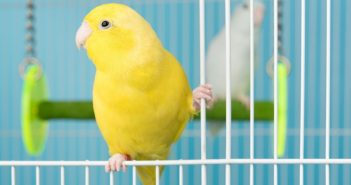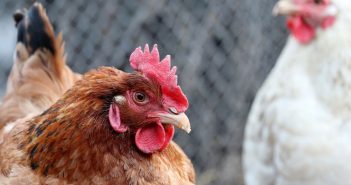 Incubation
Incubation
After the time of incubation, which proceeds for 13 – 14 days, the baby – birds start hatching. The knock the shell from inside with the help of “the egg – tooth,” which is a small chalk tentacle on the upper side of the beak and with its help baby birds manage to make a hole, which they broaden gradually. At last they are able to get out of the egg, breaking its obtuse end. According to some people the just–born birds look like “touching beasts” – nestlings with some fluffs, big raised shut eyes and wide open hungry beaks.
Photo by Greencolander
Family life
Only the female bird warms babies and just on the next day it starts feeding them. On the day of hatching they do not need any food – the yolk that it still in their abdominal cavity as reserve is enough. The male canary takes care of providing food – it often feeds the babies by pouring grounded food into their beaks. The female bird looks after the cleanness into the nest – she either eats alone or takes out of the nest the excrements of the babies that are covered in mucus. In about 7 or 8 days the mucus membrane stops forming and small birds sit on the nest’s edge alone, put their posteriors out and shoot their excrements away. Care in the nest takes about 16 days. After that young birds leave the nest, but their parents continue to feed them additionally for a certain time.
ADVICE: If the bird cage is big enough, leave the family together. But if the female bird starts pulling its feathers out to build a new nest you should separate the young birds from their parents.
Controlling the nest
You can quietly look in the nest until the 14th day. Then it is better to leave everything in peace. If small canaries stay deeply crouched and cuddle into each other into the nest, it is very dangerous if you put your hand inside. They can get freighted and to go out of the nest and thus, hurt themselves.
ADVICE: If it happens so that a small canary falls out of the nest, take it into your palms and hold it at least for half an hour near the radiator. Only then return it back to the nest.
Feeding
During the time of incubation and breeding the small birds:
- Give calcium to the female birds. Generation of eggs spends calcium in great amounts from its body.
- Add additional nourishing mixtures for the growth of small birds (they can be found in zoo – shops). They should be at disposal of parent birds all the time while they feed the baby – birds . Besides, often control these mixtures to be fresh. They should be loose and easily to break them to pieces.
Growth of baby – birds
- 1st – 5th day
Baby – canaries are still with eyes shut and take up embryonic position ; they lie down with their bellies up without stretching their necks. - 6th day
They open their eyes. The tubules on feathers can be clearly seen. - 7th – 8th day
Canaries start shooting alone their excrements out of the nest. - 12th day
The tubules covering the feathers now get torn and feathers grow. - 17th – 18th
Yong canaries leave the nest, but they are still additionally fed by their parents. - 30th day
Young birds are fully independent. - 2nd – 6th month
Languishing because of “youth change.” All feathers are changed except for the flying ones. All feathers get the same full color that old birds have and now the young ones are sexually mature.

Geomil Georgiev is owner and editor of www.birdscomfort.com where you can find information on every type of pet birds. BirdsComfort provides detailed information in decorative, large, custom, acrylic, antique, wooden, and discount bird cages sale, as well as cage covers,bird cage playstands, bird perches, bird toys, bird swings and bird foods.



